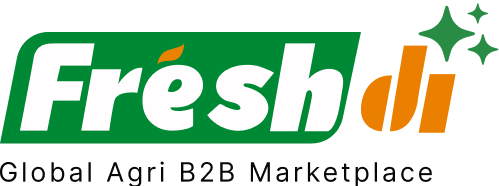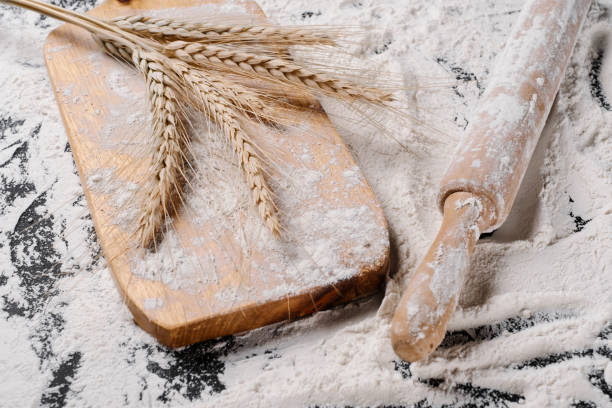Introduction – Current State of Play: The Wheat Flour Sector in China
The wheat flour industry in China is undergoing some serious changes in 2025. From government-driven food security policies to shifting import strategies and climate change effects, it’s a lot to unpack. If you’re sourcing wheat flour from China, now more than ever, staying informed is not just smart—it’s essential.
Late in 2024, China launched an ambitious decade-long plan to boost domestic grain production and consumption. Then came a significant move in March 2025: China raised its annual grain output target to 700 million metric tons and pumped 6.1% more into its agriculture stockpile budget. The message is loud and clear—China is doubling down on self-sufficiency.
Meanwhile, the country is cutting back on wheat imports, especially from the U.S. and Australia, thanks to a bumper domestic harvest and a shift toward sourcing from countries like Russia and Brazil. And let’s not forget the weather—extreme heat and dry spells are threatening crops in Henan province, a key wheat-producing area.
These shifts are reshaping the entire wheat flour landscape in China, creating both opportunities and challenges for global buyers.
Deep Dive – Breaking News: Critical Updates & Their Effects
Let’s break down what’s really shaking the market right now.
Government Policies Fueling Domestic Growth
The Chinese government has made its intentions crystal clear. With the 2024–2035 grain strategy, they’re pushing for:
- Enhanced public nutrition through higher whole grain consumption
- Advanced production technologies
- Stronger international partnerships
- More private sector investment in agriculture
This isn’t just a policy—it’s a pivot. And it’s already impacting how wheat flour is produced, processed, and priced across China.
Import Cuts and Supply Chain Expansion
Because of increased local production, China’s wheat imports are down by a projected 37% for the 2024–25 period. That’s a massive drop. The U.S. and Canada are already feeling the sting, but it also means that global wheat prices are under pressure.
Interestingly, companies like Nisun International Enterprise Development Group are stepping in to build more resilient domestic supply chains. Nisun inked deals with Shandong Binliang Industrial Development Co. Ltd. and Binzhou Zhongyu Food Industry Co., Ltd. to meet growing demand with local supply.
Weather is a Wild Card
In May 2025, China issued a high-temperature alert. Henan province saw temperatures soar past 40°C, threatening to stunt wheat development just before harvest. Because of this, China resumed buying high-quality wheat from Australia and Canada—between 400,000 and 500,000 metric tons—to offset potential losses.
So, while imports are down overall, sudden climate events are still causing last-minute procurement shifts.
Top 9 Verified Wheat Flour Suppliers in China – Relevant in the Current Climate
If you’re in the market for wheat flour from China, here are the top 9 suppliers to keep an eye on in 2025. These companies are vetted for quality, certifications, and customer feedback on Freshdi—a B2B sourcing platform known for real-time market insights and supplier verification.
1. Jiangsu Teweinong Food Co., Ltd.
A leader in bread crumb and wheat flour-based frying products, they specialize in fermented and baked wheat flour applications—ideal for snack producers and frozen food manufacturers.
2. Changsha Zhenghui Food Co., Ltd.
Known for their instant noodle-grade wheat flour, they’re a go-to for foodservice providers and noodle brands looking for consistent quality.
3. Db Tomato (Xiamen) Industry Co., Ltd.
Specializing in flavored wheat flour applications, including instant noodles with chicken seasoning. Great for brands seeking ready-to-market products.
4. Sichuan Uncle Pop Foodstuff Industrial Group Co., Ltd.
Combines wheat flour with sugar and rice for snack and biscuit production. Perfect for bakery and confectionery buyers.
5. Baixiang Foods Co., Ltd.
One of the most recognized flour providers in domestic and export markets. Offers bulk packaging for wholesalers.
6. Db Tomato (Xiamen) Industry Co., Ltd. (Second Listing)
Their second product listing showcases diversification in flavor profiles and bulk packaging formats.
7. Shandong Binliang Industrial Development Co. Ltd.
Partnered with Nisun, this supplier is building capacity rapidly and is embedded in China’s new wheat flour ecosystem.
8. Binzhou Zhongyu Food Industry Co., Ltd.
Another Nisun partner, providing advanced processing and scalable delivery options for international buyers.
9. China Flour Mills Group (Unofficial Listing)
Though not listed directly, this conglomerate manages large-scale domestic operations and supports emergency import substitutions.
Dynamic Ranking Note: Platforms like Freshdi offer “Suppliers of the Month” and “Top Exporters” rankings based on real-time RFQ activity, certifications, and buyer reviews. Always check for the latest updates before making sourcing decisions.
Market Navigation – Strategic Responses to The Prevailing Wheat Flour Landscape in China
So, what does all this mean if you’re a buyer?
Let’s keep it real—sourcing wheat flour from China in 2025 means being agile. With the government prioritizing local production, overseas buyers may face tighter availability. Prices can fluctuate fast, especially when weather disrupts supply.
What To Watch Out For:
- Pricing Volatility: A sudden drought or heatwave can shift China from exporter to importer overnight.
- Import Delays: China’s import policies are now more flexible—meaning sometimes shipments are redirected mid-route.
- Regional Sourcing Gaps: Henan is a key production zone. If weather hits hard, expect supply chain disruptions and regional bottlenecks.
How To Adapt:
- Diversify Your Supplier List: Don’t rely on a single province or supplier. Use platforms like Freshdi to access vetted suppliers across regions.
- Monitor RFQ Trends: Freshdi’s RFQ analytics can alert you to market shifts in real-time.
- Build Buffer Stock: More important than ever, especially during China’s harvest-to-import pivot periods.
Conclusion – Key Takeaways for Businesses in a Rapidly Evolving Market
China’s wheat flour market in 2025 is a moving target. Between policy reforms, climate concerns, and shifting global trade dynamics, buyers need to be on their toes. The good news? Tools and platforms like Freshdi make it easier than ever to stay informed and connected.
Key Takeaways:
- China is prioritizing self-reliance in grain production.
- Wheat flour imports are down, but sudden weather shifts can reverse trends quickly.
- Verified suppliers on Freshdi are adapting with agility, offering sourcing stability amidst chaos.
- Strategic sourcing in 2025 means staying flexible, informed, and responsive to market signals.
The Role of Freshdi:
- Verified supplier profiles
- Real-time RFQ and price trend monitoring
- Supplier performance rankings
- Seamless buyer-seller communication
Wheat Flour Buyer’s Checklist for 2025
✅ Monitor China’s domestic grain policies monthly
✅ Evaluate at least 3 suppliers across different provinces
✅ Use Freshdi alerts for RFQ trend shifts
✅ Confirm supplier certifications before finalizing deals
✅ Build 30–60 days of buffer stock during Q2 and Q3
Future Outlook: What’s Next for Wheat Flour in China?
Looking ahead, China is likely to:
- Continue investing in local wheat tech and automation
- Tighten quality standards for exports and imports
- Expand partnerships with Russia and Southeast Asia
- Use AI-driven agri-tech to monitor crop health
This means the wheat flour supply chain will get smarter—but also more localized. Global buyers should expect more competition for export-ready stock.
FAQs
1. Why is China reducing wheat imports in 2025?
Because of a record domestic harvest and a drive to achieve food security, China is cutting back on imports and relying more on local grain.
2. How can I source reliable wheat flour from China right now?
Use platforms like Freshdi to find verified suppliers with export experience and up-to-date certifications.
3. What regions in China are best for wheat flour sourcing?
Henan, Shandong, and Hebei are top regions—but climate risks like droughts can affect consistency.
4. Are Chinese wheat flour prices stable in 2025?
Not entirely. Prices are volatile due to climate issues, policy changes, and fluctuating global demand.
5. What makes Freshdi a good platform for wheat flour sourcing?
Freshdi offers real-time RFQ insights, dynamic supplier rankings, and verified supplier listings, making it ideal for navigating fast-changing markets.
References
- China plans decade-long drive to boost cereal grain consumption
- China raises 2025 budget for grain stockpiling
- Global wheat import demand dented by local output
- Nisun expands wheat flour supply role in China
- China delays or redirects 600,000 tons wheat imports
- China buys Canadian, Australian wheat as heat hits crop
- How China reduced reliance on US farm imports
- High temperatures threaten wheat quality in China


